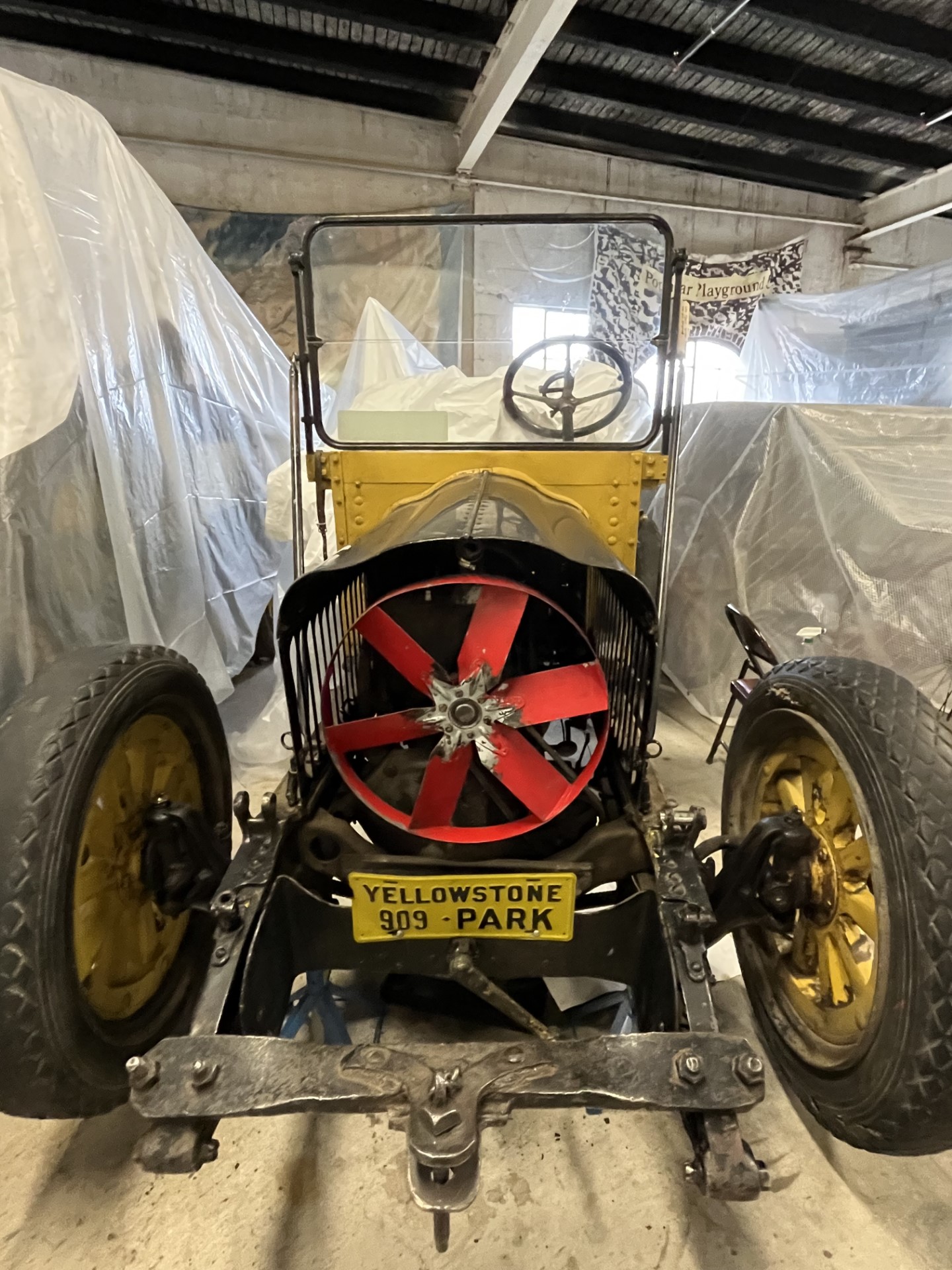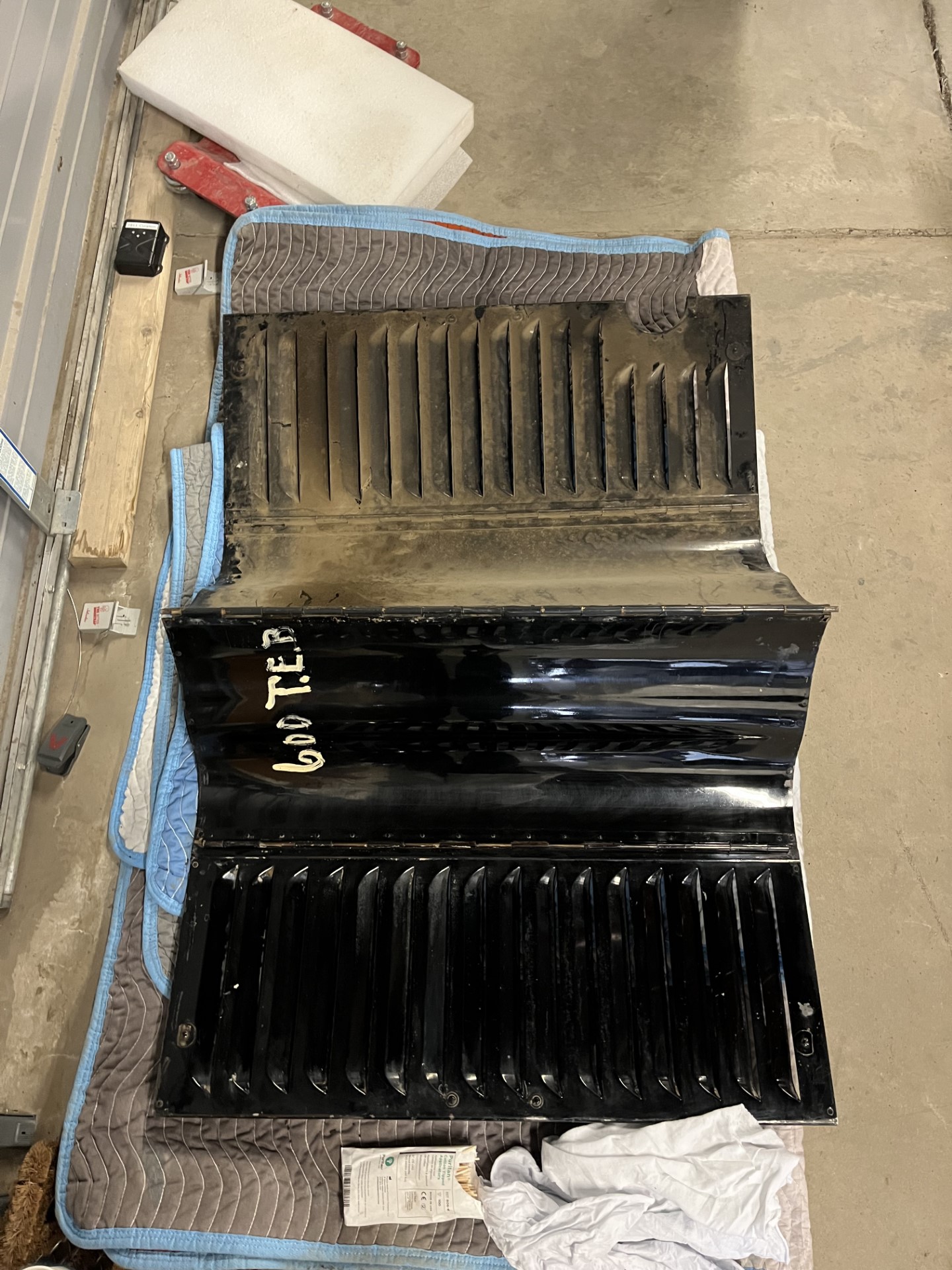
1917 Touring Vehicle used in Yellowstone National Park in storage in Yellowstone's Museum Collection
YELL #106385 is a 1917 touring car that was modified into a two-seat general-purpose utility vehicle. Several modifications have been made to this truck; the original body was removed, the chassis shortened, and several parts were cannibalized for use with YELL 90070, an 11-passenger open touring bus while being operated by TW Services. One of our staff’s favorite details is the sticker on the windshield that reads “Talking to driver prohibited”.
From December to January of this year, our team worked tirelessly to clean the grease, dirt, and dust from the truck. We used a variety of products to carefully clean away excess grime, but not the history of the vehicle.
Starting out, the grille was already disconnected from the vehicle, so it was cleaned separately by one determined staff member. She spent several days working solely on cleaning each individual hole with a small cotton swab and some mineral spirits.
While the grille was being deep cleaned, other staff started cleaning the body of the vehicle with a vacuum and small attachments designed specifically for conservation cleaning. When addressing the dust on the seats and other areas with fabric/vinyl, a mesh mat was used to ensure the integrity of the material while still pulling dust particles. This part of the cleaning process is incredibly important, as these vehicles are comprised of more wood parts than one might imagine, and we were only treating the wood with the vacuums.
Once that was completed, we addressed the metal components. For most of the parts we used a two-step cleaning process; we gently rubbed away dirt and dust with a mixture of vulpex and mineral spirits, followed by a round of just mineral spirits to remove any residue and remaining dirt. The engine hood was removed to allow for internal cleaning of that piece and the engine itself. What the team found was a great deal of grease on the metal which required a different solution. We used small brushes, rags, and many rounds of simple green to remove as much grease as possible. This part of the project took several days to complete.

Engine hood laying open, halfway through cleaning
The tire area required a combination of cleaning materials. The rubber parts were scrubbed with a small brush, simple green, and a cloth, the wooden spokes were dusted with rags and gentle brushes, and the connecting metal bits were scrubbed with simple green.
We saved the glass for last, which was quickly cleaned with ethanol and a cloth.
Lastly, as with all vehicles in this project, a newly sewn Tyvek cover was placed on top with a layer of plastic sheet over that to help protect the car.
Thank you to the Jane Learner Fund from Yellowstone Forever for making this project possible.
